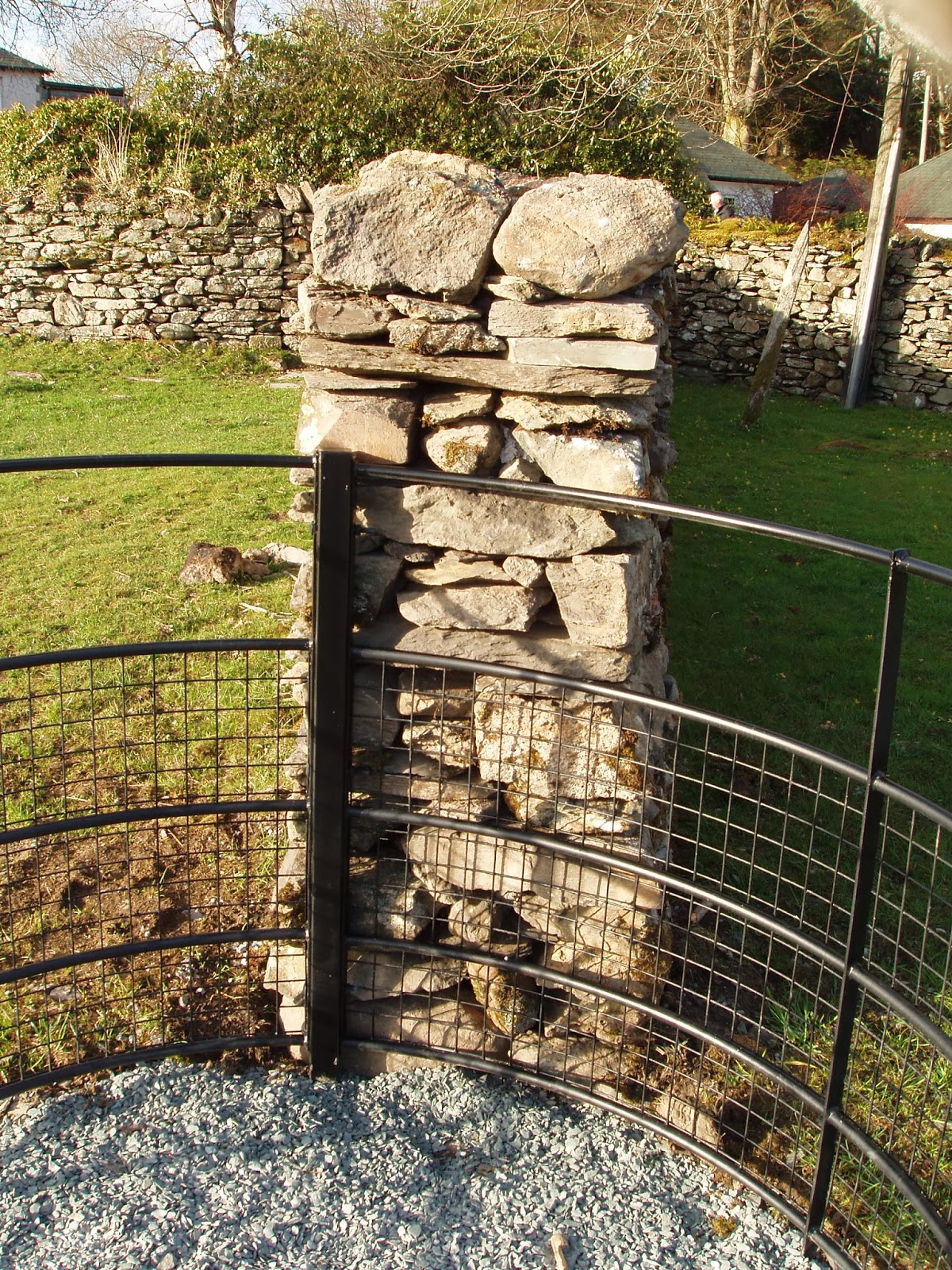A metal kissing gate, specifically designed for "large mobility vehicles," was installed last year (2013) between Council owned Borrans Park and National Trust Borrans Field, the site for Galava.... (Ambleside Roman Fort.)
The work was undertaken by National Trust Rangers, based at St. Catherine's, with volunteer help.
A large section of the boundary wall was taken down to allow space for the gate and cage; the wall was then rebuilt and "quoined up" to the gateway.
The work was undertaken by National Trust Rangers, based at St. Catherine's, with volunteer help.
A large section of the boundary wall was taken down to allow space for the gate and cage; the wall was then rebuilt and "quoined up" to the gateway.
The surplus stone was used to wall up the old roadside kissing gate for safety reasons......No pavement, and on a blind bend in the road.
| With the wall taken down, the kissing gate is being positioned and the cage sections bolted together. Image: © J.Lund. |
| TEA BREAK. Image: © J.Lund. The kissing gate completed, and the walling well underway. The "quoin end" to the left of the image is being built up to the gate post. |
 |
| One of the completed "quoin ends" with top or cam stones in place. |
 |
| New path surfaced with 15/30 ml. stone from Elterwater Quarry. The approach to Borrans Park from Borrans Field. |
| The old kissing gate sited further down the boundary wall. (Still in use) It is cramped even for pedestrians; it is unsuitable for push chairs, let alone mobility vehicles! |
| Outlook from Borrans Park to Borrans Field from the the new kissing gate. |





